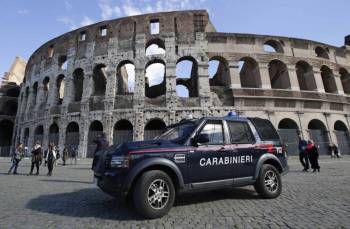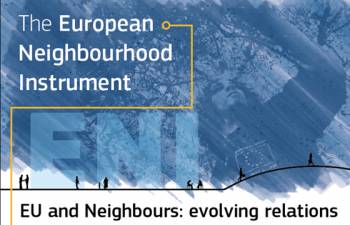Individualism versus Unity
The industrial societies advocate and promote individualism. The Merriam-Webster dictionary describes individualism as,
“A doctrine that the interests of the individual are or ought to be ethically paramount. The conception that all values, rights, and duties originate in individuals. In economics, it advocates that individuals best serve the public interest by pursuing their own self-interest.1”
The antonym of individualism is collectivism. An article in Wikipedia describes the collectivism as;
“Collectivism emphasizes the interdependence of every human. … it stresses the importance of cohesion within social groups. In collectivism people from birth onwards are integrated into strong cohesive state.”
Individualism is built based on the notion of self.
Self
The perception of self gradually forms during the infancy and progresses during childhood to adolescence and beyond. We perceive our selves as the most sure thing. We measure, analyze, and judge everything else using self’s perception as our only reliable index. However there are many evidences to prove that our perception of self is an illusion.
The interpreter Theory of Michael Gazaniga postulates that the left hemisphere of the brain makes up a post hoc scenario to make sense and fit the situation in hand. The left-brain interpreter, Gazzaniga says, is what everyone uses to seek explanations for events, triage the barrage of incoming information and construct narratives that help to make sense of the world(7). The same interpreter hemisphere creates the image of self.
Many researches cast doubt about the authenticity and reliability of the perception of what we call self (1). This presents a tremendous challenge for our everyday view of ourselves. Experiments suggest that in a very fundamental level we are not real. Instead, our self is comparable to an artifice. Many times our perception manipulates and modifies the received data form sense organs to create a so-called sensible picture of ourselves and the world out there. This includes the image of the Self as well.
Some people with autism are later to learn how to recognize themselves in a mirror and tend to form fewer autobiographical memories(2). The perception of self is similarly distorted in schizophrenics(4) and some brain damaged patients.
In conclusion, the notion of self is not primary. It is fabricated and subject to change in time based on many factors.

Manufactured self by social interaction
The feeling that I am the one and only does not stand scrutiny. Michael Bond in an article titled, “the great illusion of self” writes “Our sense of self may be the product of relationships with others.”
“The upshot is that my own self. is not so much about me; it’s as much about those around me and how we relate to one another – a notion that Damasio calls “the social me”. This has profound implications. If a primary function of self-identity is to help us build relationships, then it follows that the nature of the self should depend on the social environment in which it develops. Evidence for this comes from cultural psychology.
If the self-identity is primarily guided and built by social interactions, then the notions of independent self, individuals and individualism turns pale. We all know that we are social species. We can’t survive without the others and in isolation. Humans are interdependent and cannot be studied as isolated individuals.
Interdependence of humans
Not only our self is formed according to social interactions, but according to the organic theory, human suman Hhbhhhhhhociety resembles an organism. Just as the parts of an animal body are related and none can exist isolated from the rest, similarly, the members of society are functionally related to each other and no one can exist without society5.
Each one of us are members of a family, work place and other social circles and play our role at different levels in the society while enjoying the role of the others to survive.
Interdependence with environment
Environment supports our life. We are absolutely dependent on the ecologic system. We depend on things. “In much of the new work in the social and human sciences in which humans and things co-constitute each other, there is, oddly, little account of the things themselves. Things depend on other things. All things depend on other things along chains of interdependence6.
Obviously, we can’t live without our environment. We are set to believe that there is an independent me versus outside world. This is an illusion, our existence is intermingled and interrelated with our surroundings. There is just one coherent system. We are part of the ecological system that surrounds us.
The World is one coherent system
The universe is fundamentally harmonious. The universal laws of physics are interdependent. They arise from each other and rejoin in every phenomena throughout the universe. The coherence is a fact. Existence in isolation doesn’t have any meaning.
Quantum entanglement
When pairs or groups of particles are generated or interact with each other they get entangled. Any change on the state of one of them automatically changes the other pair or the group. In this phenomena the particle’s states cannot be described independently. The system has to be studied as a whole.
Fundamental particles of objects are constantly interacting with each other. One can assume that the objects themselves are entangled as well. This is another supporting document that everything is entangled and intermingled with everything else in the universe.
Quantum Field theory
In the quantum field theory each particle is a field that is extended throughout space. In QFT, quantum mechanical interactions between particles are described by interaction between the corresponding underlying fields.
One can then conclude that every particle in the universe is entangled with any other one through the interaction of their extended fields. Therefore, in reality there is just one complex field rather than many individual fields.
The Paradigm Shift/Unity versus Self
We take our selves as the most real thing. We measure and see everything else in the world through the eyes of our selves. In addition the foundation of individualism is built on the notion of self. Many researches prove that the perception of the self is fabricated and is subject to change, error and illusions.
Individualism is one of the main pillars of industrial culture, especially the extreme version of it, the so-called “corporate culture”. Industrial culture leaves the door wide open for selfish acts and aggressions of individuals.
Majority of current problems throughout the world is created by individualistic approach and its spinoffs, ignorance and greed. We are reaching to a gridlock. Humans have to find a way to get out of this stalemate.
It seems that the way of the future is the realization that self is a delusion. Then people perception will shift to a holistic insight. The sense that not only the whole humanity is one but we are also entangled with the whole existence. Within such a realization, not only we treat each other as one but we come to the recognition that we intermingle with the environment as well. So we are the whole system and we need to respect it.
Obtaining, such an awareness and paradigm shift is the only way to get out of the gridlock. The existing world conflicts can be solved and by taking care of the environment we will control the untamed climate change. The accelerating severe weather conditions due to the climate change is set to eradicate the life as we know it, from the surface of the planet. The paradigm shift is not just a wish, it is mandatory.
Unity is the name of the game. The gradual emergence of the sensation of unity with the humanity as a whole, with the eco-system and the whole cosmos is being observed and is very welcome.
1/ The Merriam-Webster dictionary
2/ Michael Bond, the great illusion of self, New scientist # 2905, 2013
3/ http://www.ncbi.nlm.nih.gov/pubmed/15178167
4/ http://www.sciencedirect.com/science/article/pii/S09209964130035025/ http://www.preservearticles.com/201102184074/man-is-a-social-animal-essay.html
6/ Human-thing entanglement: towards an integrated archaeological perspective, Ian Hodder, FEB 2011, DOI: 10.1111/j.1467-9655.2010.01674.x, Journal of the Royal Anthropological Institute
7/ http://www.nature.com/news/the-split-brain-a-tale-of-two-halves-1.10213




